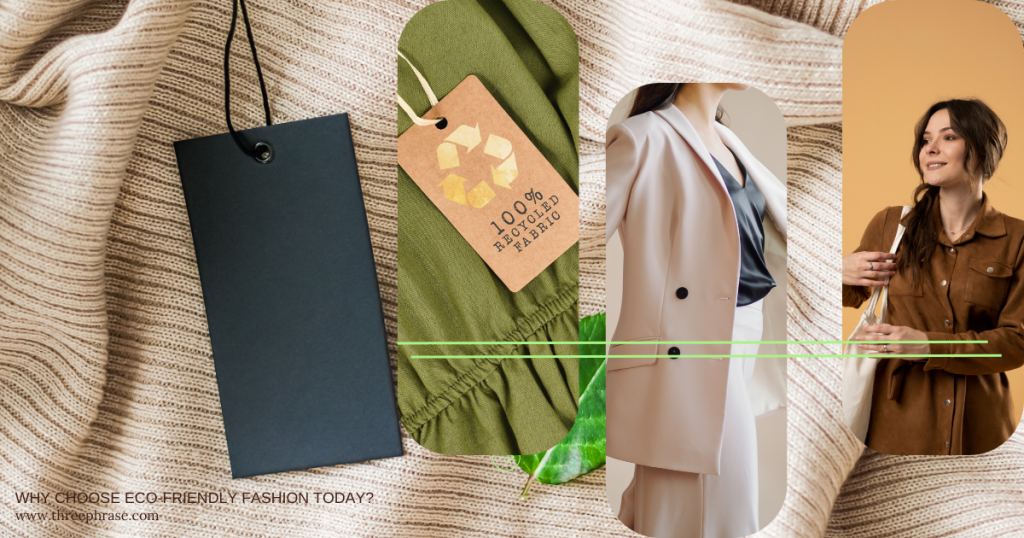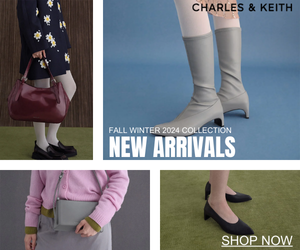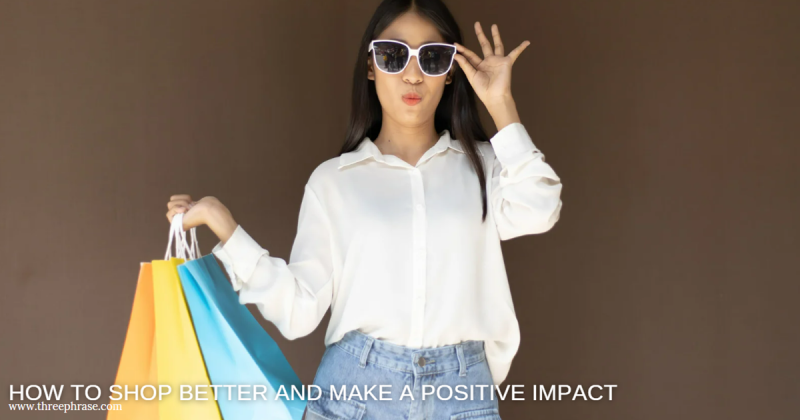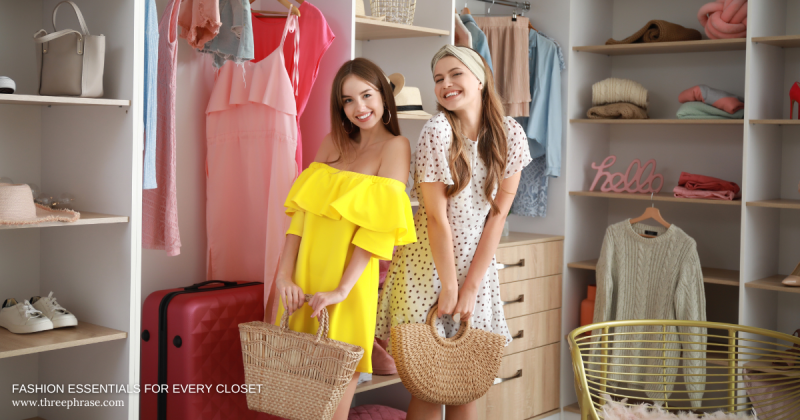Empower Your Wardrobe: Choose Eco-Friendly Fashion Today

As fast fashion and mass consumption dominate, a growing movement is emerging toward more sustainable fashion and home goods. Driven by environmentally conscious consumers, this shift emphasizes reducing waste, utilizing eco-friendly materials, and supporting ethical production practices. Whether you’re a seasoned eco-warrior or just starting your sustainable journey, this guide will introduce you to eco-chic essentials that can elevate your style and home while minimizing environmental impact. Choose eco-friendly fashion and make a positive difference today!
The Rise of Sustainable Fashion
Sustainable fashion is more than just a buzzword; it’s a paradigm shift in how we approach clothing. As awareness grows about the damaging effects of fast fashion on the environment, consumers are increasingly seeking out brands and products that prioritize sustainability. But what does sustainable fashion mean?
At its core, sustainable fashion encompasses a variety of practices, from using organic and recycled materials to ensuring fair wages for workers and reducing carbon footprints. It’s about creating high-quality garments that last longer and are designed to be reused, recycled, or composted at the end of their life cycle. This helps break the cycle of “take-make-dispose” that fast fashion has perpetuated.
Re-commerce and Circular Fashion
One of the most exciting trends in sustainable fashion is the rise of re-commerce and circular fashion. Re-commerce refers to the buying and selling pre-loved or gently used clothing, and it’s booming as more consumers look for ways to reduce their environmental footprint.
Platforms like ThredUp, Poshmark, and Depop are making it easier than ever for people to sell their gently worn clothing and purchase secondhand items at a fraction of the cost. This reduces waste and extends the life cycle of garments, keeping them out of landfills for longer. Circular fashion takes this concept further by designing products with longevity in mind, ensuring that they can be recycled, repaired, or repurposed when they’re no longer wearable.
Regarding sustainable fashion, one of the most significant changes lies in the materials being used. Traditional fabrics like cotton and polyester require water, energy, and chemicals. However, eco-friendly alternatives are gaining traction and providing stylish, sustainable options.
- Organic Cotton: Grown without harmful pesticides or synthetic fertilizers, organic cotton is more sustainable than conventional cotton. It’s also softer and more gentle on the skin.
- Bamboo: Known for its rapid growth and minimal need for water, bamboo is an excellent eco-friendly alternative for everything from clothing to bedding.
- Tencel/Lyocell: Made from sustainably sourced wood pulp, Tencel is biodegradable, breathable, and incredibly soft, making it ideal for garments that are both luxurious and eco-friendly.
- Hemp: Durable and easy to grow, hemp requires far less water than cotton and is naturally resistant to pests. It becomes progressively softer with each wash.
In an era where transparency is key, digital product passports are becoming a crucial tool for conscious consumers. These digital records provide detailed information about the product’s life cycle—from the materials used to the production process and even the item’s journey through resale platforms.
By scanning a product’s digital passport, shoppers can make more informed decisions about their purchases, ensuring that the items they buy align with their values. These passports are also vital for promoting a circular economy, as they allow for the seamless tracking of garments from creation to resale or recycling.
The Impact of Re-commerce on Consumer Behavior
Sustainable fashion isn’t just about high-end, expensive items. With the rise of re-commerce, even luxury items are becoming accessible to more consumers. Brands like Patagonia and REI are launching trade-in programs that encourage customers to return used items for credit, allowing these products to be resold at a lower price point.
This shift is beautiful in today’s economy, where inflation drives consumers to seek high-quality, durable goods that offer long-term value. Re-commerce platforms enable shoppers to purchase premium items at a fraction of the retail price while contributing to a more sustainable fashion ecosystem.
Artificial intelligence (AI) is critical in the sustainable fashion movement. AI is revolutionizing how fashion brands operate, from optimizing production and reducing waste to predicting trends and managing inventory.
For example, AI-driven demand forecasting allows brands to produce only what’s needed, reducing overproduction and the waste that comes with it. AI is also being used to create more efficient and sustainable designs, simulate the environmental impact of different materials, and track the life cycle of products through digital passports.
The slow fashion movement is all about choosing quality over quantity. Instead of following fleeting trends, slow fashion encourages consumers to invest in timeless pieces that will last for years, if not decades. This approach not only reduces waste but also emphasizes craftsmanship, ethical production, and the use of sustainable materials.
Brands like Everlane and Stella McCartney are slowly leading the way, offering well-made, classic items to be worn season after season. By focusing on longevity, slow fashion helps consumers build a wardrobe that is both sustainable and stylish.
Sustainability doesn’t stop at your wardrobe. Creating an eco-friendly home is another essential step for the conscious shopper. There are countless ways to make your living space more sustainable, from furniture to cleaning products.
- Eco-Friendly Furniture: Look for pieces made from reclaimed wood, bamboo, or other sustainable materials. Brands like West Elm and IKEA offer stylish, affordable options prioritizing sustainability.
- Green Cleaning Products: Traditional cleaning products often contain harmful chemicals that can damage your health and the environment. Opt for eco-friendly alternatives like Seventh Generation or Method, which use plant-based ingredients and biodegradable packaging.
- Energy-Efficient Appliances: Upgrading to energy-efficient appliances reduces your carbon footprint and energy bills. Look for the Energy Star label when shopping for refrigerators, washing machines, and other home essentials.
Innovations in Sustainable Fabrics
In addition to traditional eco-friendly fabrics, a wave of innovation is happening in the textile industry. New materials are being developed that push the boundaries of sustainability, offering even more options for eco-conscious consumers.
- Algae-Based Fabrics: Companies like Algaeing create textiles from algae, requiring significantly less energy and water. These fabrics are biodegradable and offer a sustainable alternative to traditional fibers.
- Recycled Plastics: Fabrics made from recycled plastics, such as those used by brands like Adidas and Patagonia, help reduce the amount of plastic waste in landfills and oceans.
- Plant-Based Leathers: Vegan leather alternatives made from materials like pineapple leaves (Piñatex), mushrooms, and even apple skins are gaining popularity as cruelty-free, sustainable options for everything from shoes to handbags.
The fashion industry is notorious for excessive water usage, particularly in cotton production and dyeing. However, many brands are reducing water consumption and promoting more sustainable practices.
Brands like Levi’s have pioneered water-efficient denim production, using up to 96% less water in their Water<Less® line. Others are exploring waterless dyeing technologies and closed-loop water recycling systems to minimize environmental impact.
Sustainability benefits both the planet and businesses. As consumers become more eco-conscious, they’re willing to spend more on products that align with their values. This has created a booming sustainable fashion and home goods market, with the potential for significant profit growth in the coming years.
According to a recent report, the global sustainable fashion market is projected to grow by over $9 billion by 2025. Brands that embrace eco-friendly practices now will be well-positioned to capitalize on this growing demand.
Sustainable Choices for the Conscious Shopper
Ready to start making more sustainable choices in your shopping habits? Check out these helpful tips to help you begin:
- Buy Less, Choose Wisely: Instead of opting for cheap, fast-fashion items that won’t last, focus on investing in high-quality pieces that endure.
- Consider Secondhand Options: Purchasing secondhand items—clothing, furniture, or home goods—is an excellent way to minimize waste and save money.
- Seek Out Certifications: When looking for sustainable products, check for certifications such as Fair Trade, GOTS (Global Organic Textile Standard), and OEKO-TEX, which confirm ethical and environmentally friendly practices.
- Support Sustainable Brands: Research and back brands that emphasize sustainability, from using eco-conscious materials to adopting fair labor practices.
Sustainable fashion goes beyond just environmental concerns; it also focuses on fair labor practices. Ethical fashion emphasizes treating workers with respect, providing safe working environments, and ensuring fair wages. Brands like People Tree and Fair Indigo lead the way in promoting supply chain transparency, guaranteeing that workers’ rights are upheld. By supporting brands prioritizing ethical labor, consumers can play a vital role in combating the exploitation often associated with fast fashion.
Minimalism and Capsule Wardrobes
Many individuals are turning to minimalism and capsule wardrobes to streamline their lives and reduce consumption. A capsule wardrobe features a curated selection of timeless, versatile pieces that can be easily mixed and matched to create various outfits. This strategy not only reduces waste but also promotes mindful purchasing. Adopting a capsule wardrobe lets you prioritize high-quality, sustainable items you love rather than chasing temporary trends. Brands like Vetta and Eileen Fisher offer capsule collections specifically designed with sustainability in focus.
Conclusion
Embracing eco-chic essentials in fashion and home goods is a meaningful way to impact the planet positively. By opting for sustainable materials, supporting ethical production, and prolonging product life cycles, conscious consumers can help minimize waste and foster a sustainable future. The best part? You can maintain your style while living sustainably—eco-friendly options are more fashionable and accessible than ever. Whether refreshing your wardrobe or redecorating your space, remember that every choice matters. Start small, make mindful decisions, and play your part in creating a greener, more sustainable world




